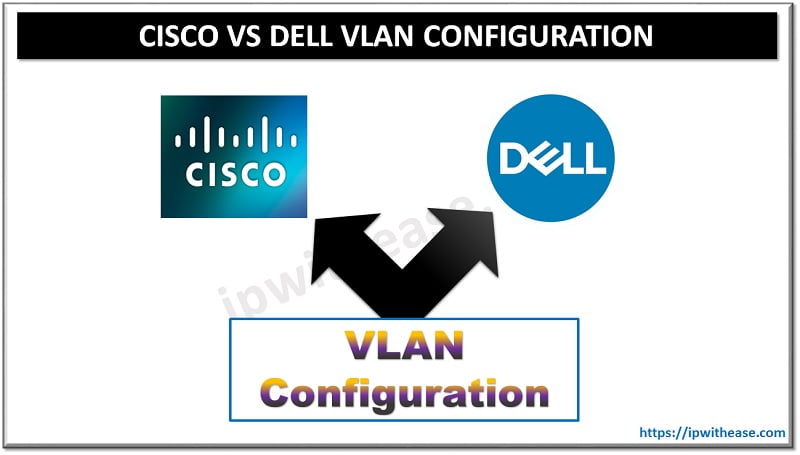Table of Contents
There are two ways that help us to mitigate the BGPs full-mesh requirement in a network: Using BGP route-reflectors and Using BGP confederation. In this post, we will understand how BGP confederation works and will also configure as simple topology explaining how to configure the same.
What is BGP Confederation & How it Works?
BGP confederations allow us to divide a single AS into one or more ASs and assign the whole group to a single AS. Each smaller AS will need to have a full mesh inside its own AS.
Related – BGP Interview Questions
Even though this ASs will have EBGP peers to ASs within the confederation, they exchange routing as if they were using IBGP; next hop, metric and local preference information is preserved.
To the outside world, the confederation (the group of ASs) will look like a single AS.
BGP Confederation: Topology
We will use the below topology to configure the BGP confederation:

- In the above topology routers R2, R3, R4 & R5 are part of the same AS 100.
- We have divided AS 100 into two smaller AS 10 and 20 with two routers each.
- R2 & R3 will form an IBGP neighborship in AS 10.
- R4 & R5 will form an IBGP neighborship in AS 20.
- R3 and R4 will form EBGP neighborship.
Related – BGP Local Preference Cisco
Configuration
R1
interface Loopback0
ip address 1.1.1.1 255.255.255.255
!
interface FastEthernet0/0
ip address 9.9.12.1 255.255.255.0
!
router bgp 200
bgp log-neighbor-changes
network 1.1.1.1 mask 255.255.255.255
neighbor 9.9.12.2 remote-as 100R2
interface Loopback0
ip address 9.9.0.2 255.255.255.255
ip ospf 1 area 0
!
interface FastEthernet0/0
ip address 9.9.12.2 255.255.255.0
!
interface FastEthernet1/0
ip address 9.9.23.2 255.255.255.0
ip ospf 1 area 0
!
router bgp 10
bgp log-neighbor-changes
bgp confederation identifier 100
bgp confederation peers 20
neighbor 9.9.0.3 remote-as 10
neighbor 9.9.0.3 update-source Loopback0
neighbor 9.9.12.1 remote-as 200R3
interface Loopback0
ip address 9.9.0.3 255.255.255.255
ip ospf 1 area 0
!
interface FastEthernet0/0
ip address 9.9.23.3 255.255.255.0
ip ospf 1 area 0
!
interface FastEthernet1/0
ip address 9.9.34.3 255.255.255.0
ip ospf 1 area 0
!
router bgp 10
bgp log-neighbor-changes
bgp confederation identifier 100
bgp confederation peers 20
neighbor 9.9.0.2 remote-as 10
neighbor 9.9.0.2 update-source Loopback0
neighbor 9.9.0.4 remote-as 20
neighbor 9.9.0.4 ebgp-multihop 2 # Uses EBGP multihop as R4 is treated as a EBGP neighbor inside a confederation and Loopback of R4 is one hop away from R3.
neighbor 9.9.0.4 update-source Loopback0R4
interface Loopback0
ip address 9.9.0.4 255.255.255.255
ip ospf 1 area 0
!
interface FastEthernet0/0
ip address 9.9.34.4 255.255.255.0
ip ospf 1 area 0
!
interface FastEthernet1/0
ip address 9.9.45.4 255.255.255.0
ip ospf 1 area 0
!
router bgp 20
bgp log-neighbor-changes
bgp confederation identifier 100
bgp confederation peers 10
neighbor 9.9.0.3 remote-as 10
neighbor 9.9.0.3 ebgp-multihop 2
neighbor 9.9.0.3 update-source Loopback0
neighbor 9.9.0.5 remote-as 20
neighbor 9.9.0.5 update-source Loopback0R5
interface Loopback0
ip address 9.9.0.5 255.255.255.255
ip ospf 1 area 0
!
interface FastEthernet0/0
ip address 9.9.45.5 255.255.255.0
ip ospf 1 area 0
!
interface FastEthernet1/0
ip address 9.9.56.5 255.255.255.0
!
router bgp 20
bgp log-neighbor-changes
bgp confederation identifier 100
bgp confederation peers 10
neighbor 9.9.0.4 remote-as 20
neighbor 9.9.0.4 update-source Loopback0
neighbor 9.9.56.6 remote-as 200R6
interface Loopback0
ip address 6.6.6.6 255.255.255.255
!
interface FastEthernet0/0
ip address 9.9.56.6 255.255.255.0
!
router bgp 200
bgp log-neighbor-changes
network 6.6.6.6 mask 255.255.255.255
neighbor 9.9.56.5 remote-as 100Logs
R3 forms IBGP with R2 and EBGP with R4:
R3#sh ip bgp summary
BGP router identifier 9.9.0.3, local AS number 10
BGP table version is 1, main routing table version 1
1 network entries using 144 bytes of memory
1 path entries using 80 bytes of memory
1/0 BGP path/bestpath attribute entries using 136 bytes of memory
1 BGP AS-PATH entries using 24 bytes of memory
0 BGP route-map cache entries using 0 bytes of memory
0 BGP filter-list cache entries using 0 bytes of memory
BGP using 384 total bytes of memory
BGP activity 1/0 prefixes, 1/0 paths, scan interval 60 secs
Neighbor V AS MsgRcvd MsgSent TblVer InQ OutQ Up/Down State/PfxRcd
9.9.0.2 4 10 5 4 1 0 0 00:01:15 1
9.9.0.4 4 20 4 4 1 0 0 00:01:07 0And Similarly R4 forms IBGP with R5 and EBGP with R3:
R4#sh ip bgp summary
BGP router identifier 9.9.0.4, local AS number 20
BGP table version is 1, main routing table version 1
1 network entries using 144 bytes of memory
1 path entries using 80 bytes of memory
1/0 BGP path/bestpath attribute entries using 136 bytes of memory
1 BGP AS-PATH entries using 24 bytes of memory
0 BGP route-map cache entries using 0 bytes of memory
0 BGP filter-list cache entries using 0 bytes of memory
BGP using 384 total bytes of memory
BGP activity 1/0 prefixes, 1/0 paths, scan interval 60 secs
Neighbor V AS MsgRcvd MsgSent TblVer InQ OutQ Up/Down State/PfxRcd
9.9.0.3 4 10 5 4 1 0 0 00:01:42 0
9.9.0.5 4 20 6 4 1 0 0 00:01:50 1But for the external routers R1 and R6, the remote AS will be seen as a single AS 100 and they form neighbor ship with R2 and R5 respectively.
R1#sh ip bgp summary
BGP router identifier 1.1.1.1, local AS number 200
BGP table version is 2, main routing table version 2
1 network entries using 144 bytes of memory
1 path entries using 80 bytes of memory
1/1 BGP path/bestpath attribute entries using 136 bytes of memory
0 BGP route-map cache entries using 0 bytes of memory
0 BGP filter-list cache entries using 0 bytes of memory
BGP using 360 total bytes of memory
BGP activity 1/0 prefixes, 1/0 paths, scan interval 60 secs
Neighbor V AS MsgRcvd MsgSent TblVer InQ OutQ Up/Down State/PfxRcd
9.9.12.2 4 100 5 7 2 0 0 00:03:02 0R6#sh ip bgp summary
BGP router identifier 6.6.6.6, local AS number 200
BGP table version is 2, main routing table version 2
1 network entries using 144 bytes of memory
1 path entries using 80 bytes of memory
1/1 BGP path/bestpath attribute entries using 136 bytes of memory
0 BGP route-map cache entries using 0 bytes of memory
0 BGP filter-list cache entries using 0 bytes of memory
BGP using 360 total bytes of memory
BGP activity 1/0 prefixes, 1/0 paths, scan interval 60 secs
Neighbor V AS MsgRcvd MsgSent TblVer InQ OutQ Up/Down State/PfxRcd
9.9.56.5 4 100 6 7 2 0 0 00:03:09 0Hope you would have understood all about BGP Confederation.
Continue Reading
ABOUT THE AUTHOR

You can learn more about her on her linkedin profile – Rashmi Bhardwaj



